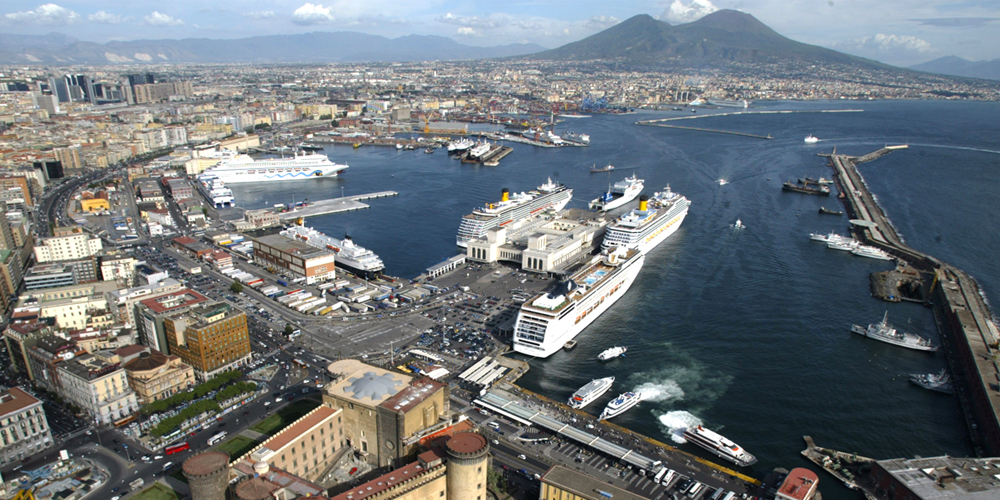The port of Naples

Founded by the Greeks, expanded by the Romans, brought to the maximum expansion by Angevins and Bourbons, the port of Naples has always been a gateway to the city. Through its port, Naples has seen centuries of history full of culture and famous people who have enriched its history.
The history of the origins of the port of Naples
Naples was founded by a group of Greeks who landed on the coasts of present-day Cuma from Rhodes, before deciding to expand eastwards and found Neapolis and its port. Since the times of the Greeks and the Romans then, the port has always been a military one, but over the centuries it opened more and more to the maritime traffic assuming increasing importance, so much to become one of the principal ports of the Mediterranean.
The Greek-Roman port provided a large protected basin in the area of the current Piazza Municipio and a small cove in that of Piazza Bovio.
The port of Naples in history: from the Normans to today's maritime station
After the Greek colonization and the dominion of the Roman empire, Naples, like all of Italy, endured a period of foreign domination that alternated in the centuries governing the city, always leaving in it an indelible mark of their passage, from an artistic and cultural point of view. Even the port of Naples was not exempt from these transformations.
After the fall of the Roman Empire, Naples experienced a period of great splendour with the advent of the Normans, so much so that the city even managed to enter the restricted circle of the Hanseatic League, which connected the cities through commercial and transport agreements from the Baltic Sea of the Mediterranean. The port that now established itself throughout Italy experienced a further expansion during the Angevin first and then the Aragonese kingdom, with the creation of the Angevin wharf opposite the Angevin Male and a new arm, the so-called Alfonsino arm, eastward from the great pier during Spanish domination.
The statement at European level will come a few centuries later, thanks to the Bourbons, when Naples, from the capital of the Kingdom of the Two Sicilies, experiences a new period of economic, social and cultural development. Several new piers were created and the shipyards were expanded with an arsenal at the foot of the Santa Lucia district. The expansion of the port of Naples continued even during the unification of Italy, which gave the city more moorings, the electrification of the port and the city's first maritime station on the current Pisacane pier opposite Via Marina.
At the beginning of the twentieth century, the beauty of the port of Naples returned to flourish with the creation of the Cantieri del Mediterraneo and with the beginning of the twenty years a new Maritime Station was built on a project by Cesare Bazzani, facing the Maschio Angioino on the current Beverello pier.
Visit the port of Naples: what to see here
The port of Naples today is one of the most crowded in Italy, a stop on several tours from every place in Europe, offering those who visit it incredible spectacles. Once we arrive at the port we are greeted by a majestic view with the Vomero hill surmounted by Castel Sant'Elmo and the Maschio Angioino that frame us, you can quickly visit some of the most beautiful city places.
From the aforementioned Maritime station to the Maschio Angioino, passing through the Mercadante theatre and the new Piazza Municipio, designed by Alvaro Siza and Souto de Moura, but also the royal palace, the San Carlo theatre and the Umberto Gallery.
These are just some of the attractions that the city of Naples offers when you arrive from the port and you can't miss it.










Lascia un commento